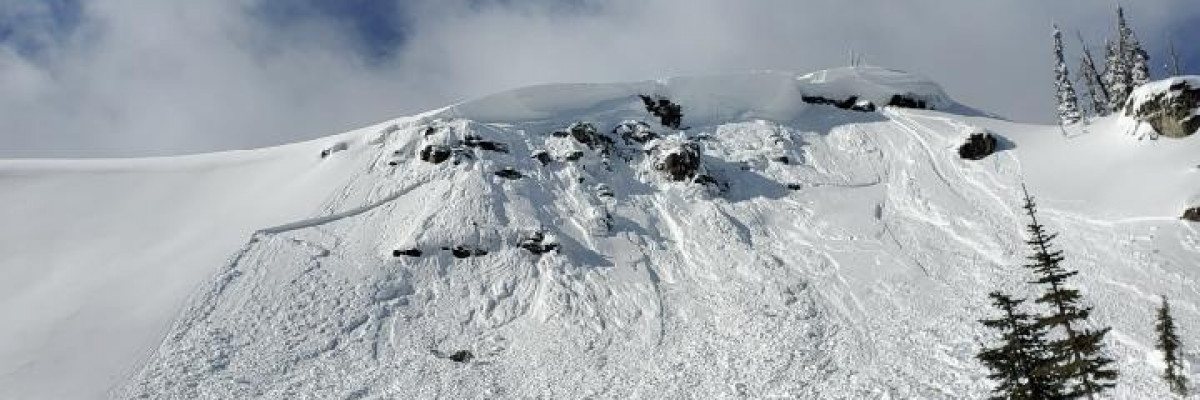The avalanche danger for the west central Montana backcountry is MODERATE on wind loaded slopes and LOW on all other slopes. The southern Bitterroot is MODERATE in all terrain.
Good morning, this is Jeff Carty with the West Central Montana Avalanche Center’s avalanche advisory for February 13, 2020. Today’s advisory is sponsored by LB Snow. This danger rating does not apply to operating ski areas, expires at midnight tonight, and is the sole responsibility of the U.S. Forest Service.
Weather and Snowpack
Over the past couple of days the weather mellowed out a bit, but was thankfully still bringing us snow. We’ve had mixed skies and periods of moderate wind. The area has averaged 0.6” of snow water equivalent (SWE). Snowbowl reported 4” of new snow yesterday, Lolo had 6” of low-density new snow, the southern Missions got around 8″, the central Bitterroot up to 10″ and southern Bitterroot 6″. This has been landing on a surface free of instabilities and we expect that it will bond well.
The sun hasn’t been out full time, but it has been strong enough to affect snow surfaces. South faces are denser and stiffer than nonsolar aspects. Solar warming triggered some small sluffs on steep south aspects yesterday, and at lower elevations could lead to crusts forming.
The wind has continued to periodically load start zones at higher elevations near ridge top. It is possible to trigger a wind slab avalanche in steep, high elevation, wind loaded terrain. Cornice fall is still a concern.
Storm slab is mostly not an issue. Last week’s snow has bonded well. Yesterday’s new snow was too low density to form a slab and should bond well as it settles. Storm slabs may be found in very isolated spots, and overall, are unlikely to slide.
Loose snow avalanches or sluffs can be a problem in steep terrain, >38º. While mostly manageable they become more hazardous if they can push you into terrain traps.
The southern Bitterroot still has the persistent slab problem. On Saturday, February, 8 there was a natural avalanche, to ground, in the depth hoar that was plaguing us through January. It had been 24 days since we’d had a report of a slide on this layer, highlighting the unpredictability of this problem.
The Bottom Line
In most of the forecast area, the avalanche hazard is low, and it is unlikely to trigger an avalanche. Low hazard does not mean no hazard; do your due diligence. Dig a pit, test the snow, watch for red flags. Avoid steep wind loaded terrain near ridge tops. Give cornices a wide berth. Ski one at a time.
The southern Bitterroot requires more caution as the depth hoar is still active. Check snow depths throughout tours; shallow areas are more likely trigger points. Sticking to lower angle simple terrain is still the best approach to this problem.
Always carry your beacon, shovel, and probe.
As always, we welcome all public observations of avalanche conditions, please submit them here.
If you’d like to increase your avalanche knowledge and competence, check out our course offerings.
Ski and ride safe.
























